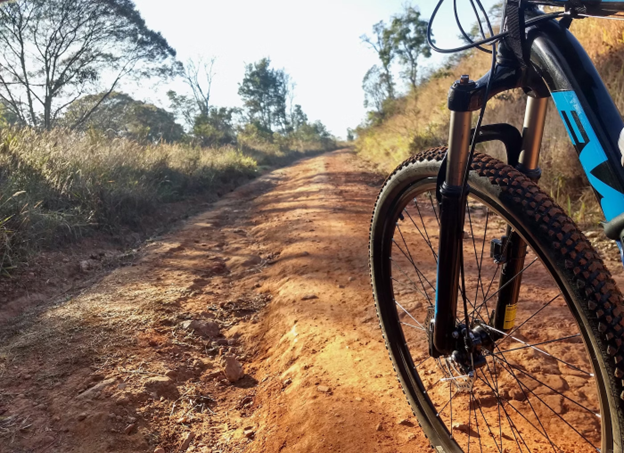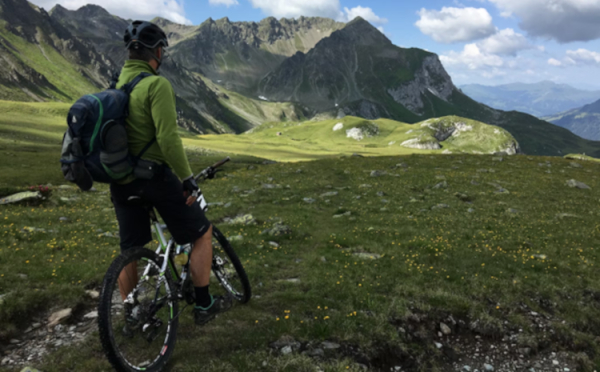Warm-up
Mountain bikers are formidable athletes that must remain in peak physical condition to achieve peak performance on the bike. Training for endurance races or seeking to enhance your efficiency and skill requires a comprehensive fitness program to avoid injury and reach goals more efficiently and quickly.
Your plan may involve anything from riding three days each week with increasing intensity or hiring a coach; whatever your plan looks like it must include high-intensity workouts that build strength and endurance.
Conducting the appropriate pre-ride warm up (https://www.reddit.com/r/cycling/comments/134elmq/how_to_warm_up_before_biking/) is critical to helping your body engage and stabilize on the bike, lowering muscle tension and stretching for increased performance. By stretching, releasing tension in muscles and avoiding injuries you can enhance performance while minimizing injury risks.
Stretching
Mountain biking can be an intense form of physical exercise that not only works the legs but also core and arm muscles. A ride will engage multiple muscle groups including quadriceps (front thigh muscles), glutes and calves (back of lower leg). Furthermore, shoulders and upper back support is utilized while leaning forward on the bike.
Plank exercise is another fantastic way to stretch and strengthen core muscles and shoulders. To begin, place your hands just wider than shoulder width apart while keeping your core engaged; slowly push yourself upward while squeezing glutes before returning back down into plank position.
Repeat 15-20 reps on each side for added difficulty or extend duration between each pose hold - be sure to do both sides to evenly distribute workload! Remember warm-up before and stretch after every workout as well as between rides!
Strengthening
Mountain biking is an intense and fast sport, so to withstand its demands you must build up muscle strength to cope. Doing this will build your confidence on the bike while decreasing risk of injury.
If you need help understanding how to train effectively, talk to one of Spooner therapists today! We will be more than happy to recommend a plan tailored specifically to your goals, available time and fitness level - from simple hill reps and core strengthening workouts on your fridge's magnet board, all the way up to more comprehensive periodized programs - we are here to ensure you make the most out of every minute spent on trails. To arrange an appointment now contact us!
Nutrition
According to this site, a good diet is imperative when training for mountain biking as exercise. Since you will be expending significant energy during each ride, eating nutritious foods will ensure you remain strong, powerful, and fast on your ride.
Carbs are our body's primary source of fuel, providing much-needed energy during rigorous single-track and mountain bike racing. In order to ensure optimal performance on these challenging courses, carbohydrates should be eaten beforehand in the form of meals with lots of carbohydrates (i.e. the night before your ride) as well as having easily digestible snacks such as isotonic drinks, bananas, energy gels/bars or dates on hand during each ride.
Protein is essential to muscle recovery after any workout or race and can be obtained through lean meats, eggs, and dairy products. Making sure to include it regularly in meals and snacks throughout the day can only benefit you!

Gear
Mountain biking is an exhilarating outdoor activity that requires special equipment to remain safe and comfortable. An investment in high-quality clothes for mountain biking as well as bicycles and helmets are important. Additionally, eye protection such as goggles or glasses may provide further defense from dust, rocks, mud and debris on the trail.
Goggles come equipped with interchangeable lenses for custom weather adaptation and come in various styles that complement both full face helmets and more casual clothing. Hydration packs are another popular cycling accessory, featuring a reservoir and hose to allow riders to sip water as they pedal. Hydration packs come in all sizes ranging from small to large; some even feature space for snacks or equipment for longer rides.
Bikers need two pieces of integral gear: padded shorts known as chamois designed to absorb impact when pedaling hard. By including these in your gear list, long rides may become more enjoyable - particularly if you're new to biking and don't yet feel at ease sitting for prolonged periods on an uncomfortable saddle.
Mountain bike shoes are recommended for both safety and comfort. A good pair should feature a stiff sole that transfers power efficiently and sticky rubber grip that keeps pedals secure, with knee pads for extra support in case of bumps or crashes. You can find everything from casual sneakers to high-end racing models in this regard.





